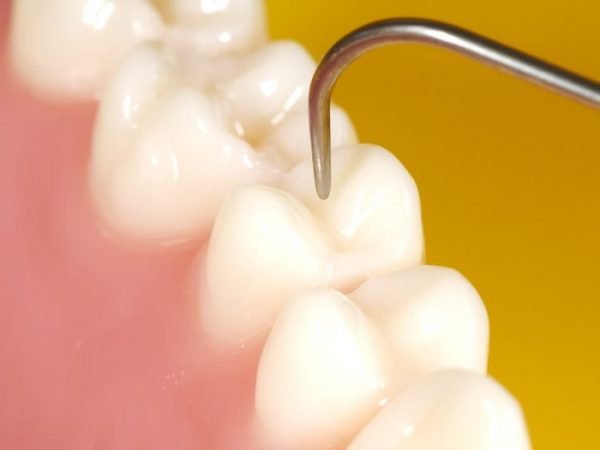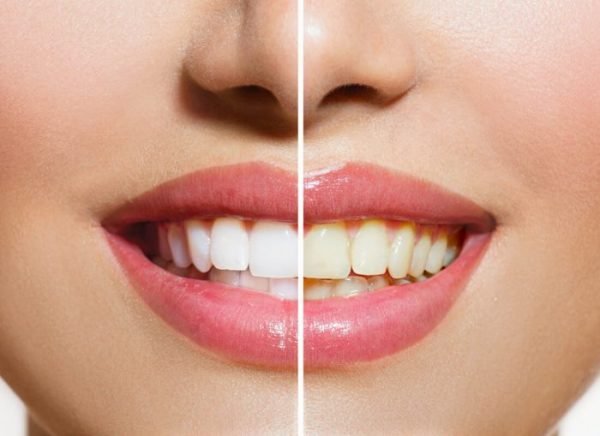ABOUT TOOTH FILLING
A tooth filling is necessary when a tooth has a cavity in it. Once the tooth has a cavity, it is recommended to get a filling as soon as possible, before the cavity grows and further damages the tooth.
The dentist will usually drill around the cavity slightly to get rid of any damaged tooth, before applying the filling. Depending on how deep the cavity is, the dentist may or may not use local anesthetic.
The most commonly used filling materials are amalgam and composite. Amalgam (silver) fillings are stronger. They are made from liquid mercury mixed with a powdered alloy of silver, copper, and tin. These are sometimes used for fillings that are hidden, but for visible fillings many people prefer to have tooth-colored composite resin fillings.
If a cavity is very big, the pulp and roots may be infected and in this case, root canal treatment might be needed. For large cavities, the dentist may recommend an inlay or onlay. Some people avoid amalgam fillings due to the mercury content, which releases low levels of vapor, however the Food and Drug Administration (FDA) state that the levels are very low, and not known to cause harm.
It is very rare to have complications from a dental filling, however, there is a risk that the filling will come out, and the procedure will need repeating. There is also a very small risk of nerve damage or infection, as well as injuries to the lip and gums as a result of local anesthetic, meaning that patients don’t detect pain. Some patients may have an allergic reaction to materials used.
Recommended for
- Cavities
TIME REQUIREMENTS
- Average length of stay abroad: 1 – 2 days.
- Number of trips abroad needed: 1.

COMPARE TOOTH FILLING PRICES AROUND THE WORLD
| Country | Cost |
|---|---|
| United Kingdom | 102€ |
| Turkey | 45€ |
| Hungary | 40€ |
| Spain | 40€ |
| Mexico | 36€ |
| Costa Rica | 27€ |
| Poland | 19€ |
| Thailand | 15€ |
HOW TO FIND QUALITY TREATMENT ABROAD
BEFORE TOOTH FILLING ABROAD
Depending on the location and the severity of the cavity, your dentist may administer a local anesthetic to the area before performing the filling, although increasingly many fillings are carried out painlessly without it.
While most patients are unlikely to need it, for longer procedures, a dentist might also use a bite block to prop the mouth open for the duration of the procedure.
HOW IS IT PERFORMED
If the mouth has been numbed, the dentist will allow the anesthesia to take effect before beginning the process of removing the decayed parts of the tooth, most commonly with a high speed dental drill.
Depending on the location of the cavity and the material of the filling, a few things can happen next. For most patients it is simply a matter of covering the cavity hole with the appropriate material. Once applied, the dentist will shape the filling so that it feels natural to the patient and doesn’t affect their natural bite. For patients receiving composite fillings, it is normal for the filling to be set with LED lights.
For patients receiving a filling between two teeth, things are a little more involved. The dentist will place a metal band around the tooth to build the wall of the tooth up. The dentist will additionally place a dividing wedge between the two teeth so that once the filling is completed, the neighboring tooth and the new filling will touch and prevent food from getting caught between the two teeth when you chew.
Anesthesia
Fillings can be done without any anesthetic, or with local anesthetic.
Procedure duration
The Tooth Filling takes 30 to 60 minutes.

WHAT TO EXPECT AFTER TOOTH FILLING
Post procedure care
Patients should avoid eating on the filling straight away as it might come out. After local anesthetic, it is advised to avoid hot food and drinks while the mouth is numb to avoid the risk of burning.
Possible discomfort
Most patients do not experience any discomfort following a filling, although some sensitivity on the treated tooth is normal.
IMPORTANT THINGS TO KNOW ABOUT TOOTH FILLING
Not recommended for
- Large cavities
- Patients with allergies to mercury (amalgam filling)
Potential risks
- Filling may fall out
- Never damage
- Infection
- Damage to the lips or gums
- Allergic reaction to materials used
FREQUENTLY ASKED QUESTIONS
A tooth filling is used on teeth with cavities to replace the decayed part of the tooth. Tooth fillings can be made of several different materials, however the most common are amalgam and composite resin.** Amalgam fillings, also known as silver fillings, are made of silver, tin, copper, zinc, and mercury. The amount of mercury in the fillings is considered to be safe by the FDA. If you are concerned about the presence of mercury in your fillings you should discuss your concerns with a dental professional.
Composite resin fillings are made of silica coated in a type of plastic. They are close to the natural color of teeth and usually less noticeable than amalgam fillings.
Ceramic fillings are also available, however your dentist will need to check your bite to ensure that the ceramic won’t grind against other teeth and wear them down faster.
Gold fillings have been popular for a long time and can last up to 15 years, but they are far more expensive than other types. Some patients like the way they look better than silver fillings.
In children, for “baby teeth” some dentists may use glass ionomers as a short-term solution for a tooth the child will outgrow and lose anyway. Glass ionomers release fluoride slowly over time.
The best type of filling for you is something you should discuss with your dentist. Composite resin fillings are less noticeable than amalgam fillings, however they may not last as long and are usually more expensive. Composite fillings do not contain mercury, but may leak bisphenol-A, which is a chemical found in their coating. Again, you should discuss with your dentist the benefits and risks of each type.
Dental caries are caused by bacteria in the mouth wearing down the enamel on the outside of the tooth. The bacteria cause the tooth to slowly decay over time, and cause an infection in the pulp of the tooth. Eventually, this will destroy the tooth and the infection will spread throughout the teeth and gums and cause more serious health problems. This is why it is so important to treat caries quickly.
The bacteria that cause caries are present in everyone’s mouth, and you can’t spread them to other people. Caries or “cavities” can be prevented with good oral hygiene. Any dentist can give you advice on how to prevent them and other kinds of dental problems through good oral hygiene. Most recommend brushing and flossing at least twice per day and avoiding eating too much sugar.
Tooth fillings can fall out for a variety of reasons, including injuries to the mouth. Fillings may also wear down over time and will need to be replaced immediately if they develop weak spots or fall out. Fillings may also become discolored over time.
How long fillings last depend on the materials used, the skill of the dentist in bonding the material to the tooth, and the overall shape of the filling and how well it fits into the tooth. Gold or silver amalgam fillings last an average of 10 – 15 years, whereas composite fillings do not last as long.
You should not feel any pain during the procedure. The dentist will use a local anesthetic to numb the area they are working on. Some patients feel pain as the dentist injects the anesthetic, however most dentists will first dry the area and apply a numbing gel so you don’t feel the injection. Some patients find the sound of the dental drill to be very unpleasant, and may wear headphones during the procedure. If you have concerns or fears, ask the dentist during the consultation what they will do for your comfort.
You should discuss what you can eat after the procedure with your dentist. Most patients can eat normally after a day or so. It is recommended you wait until the local anesthetic wears off. There may be some soreness that usually goes away within 48 hours.















